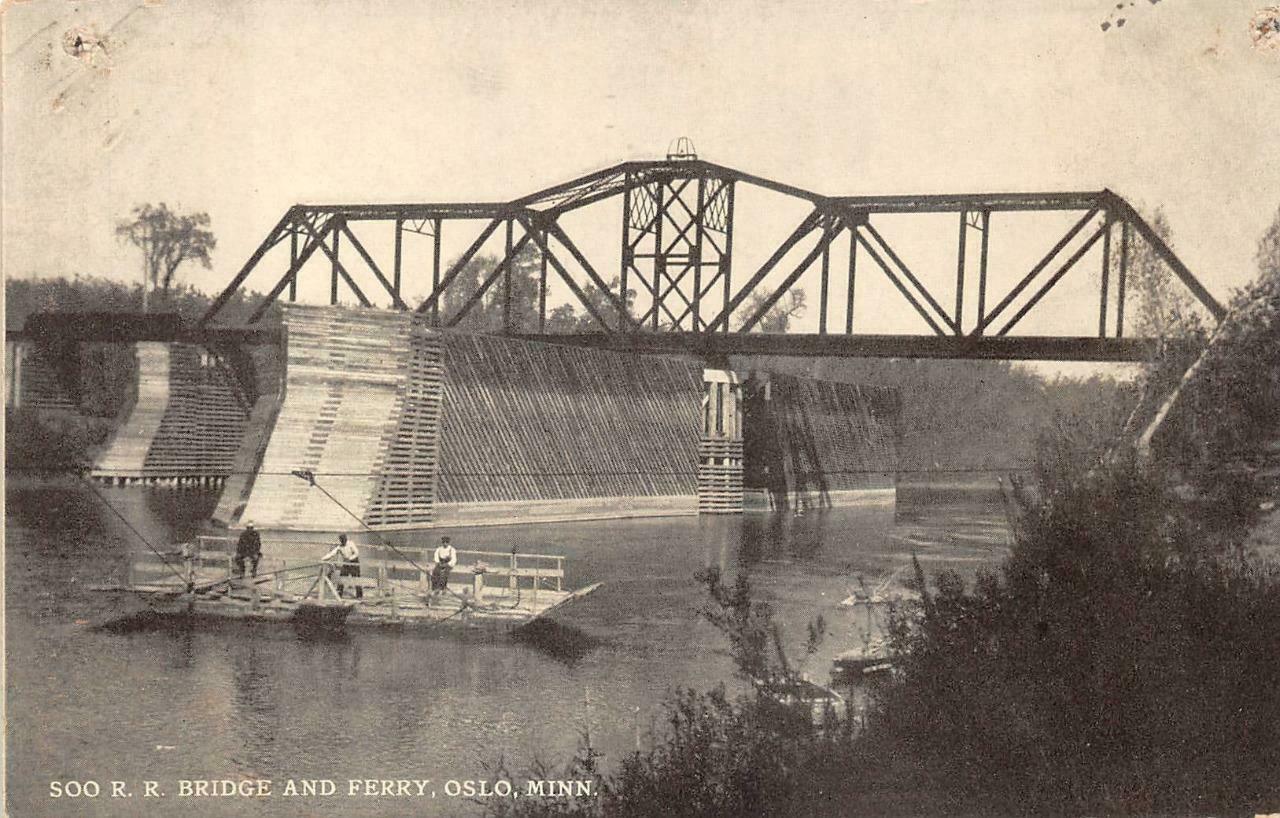Located at Oslo, this massive swing bridge is the only remaining railroad swing bridge in North Dakota. Highly visible from Minnesota Highway 1/North Dakota Highway 54; this is also the last swing bridge across the Red River of the North in the United States.
Originally built in 1905, the bridge originally featured a massive through truss swing bridge, each leaf with riveted connections, four panels and a Warren design. In addition, the original approaches to the bridge included trestle approaches. The entire bridge originally sat on timber substructures.
The truss span has a number of unique features, such as laced endposts, heavy laced members and a unique portal. The tower between the two halves of the swing span also features unique bracings, typical for a swing span like this.
While the Red River was originally considered to be open to navigation, the last time this bridge opened was in 1923. However, the original center pier roller is still completely intact, although the ends of the swing span were removed from rollers at some point prior to 2010.

Historic photo of the bridge
The original Minnesota (east) approach appears to have been replaced in 2005, while the North Dakota (west) approach was replaced in 2013. These replacements involved completely removing the original through girder spans and some trestle spans, and adding a new modern through girder. This appears to have been done to help control flooding at this bridge. The substructures were also upgraded, leaving only the center pier and remaining west approach using the original timber substructures.
The future of this bridge is clouded. With two significant upgrades in a decade, it is possible the main truss span will also be replaced. It is also possible the bridge will be lengthened to help relieve flooding in Oslo.
Overall, the bridge appears to be in fair to good condition, with no major deterioration noted on the truss, the only remaining historic portion of this bridge. Northern Plains Railroad currently operates the bridge, although the line is still owned by Canadian Pacific Railway.
The author has ranked this bridge as being highly significant, due to the lack of remaining swing bridges in North Dakota.
The photo above is an overview.
| Upstream | Northern Pacific Bridge #95 |
| Downstream | Emerson Rail Bridge |
